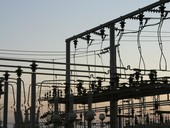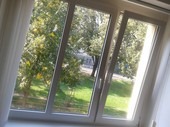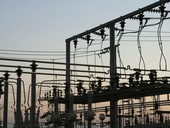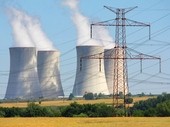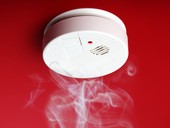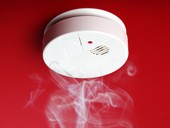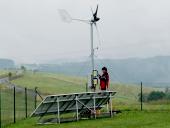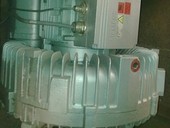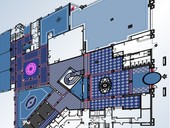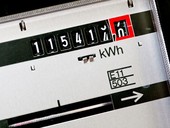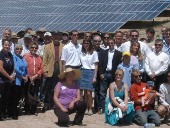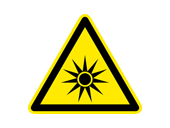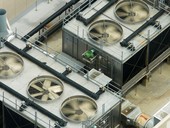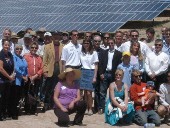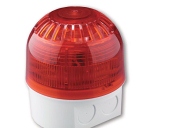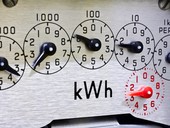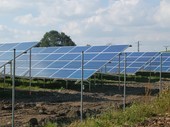The article presents an extensive and detailed analytical study that explores in detail the possibility of directing the development of the European energy industry in order to achieve a significant reduction in greenhouse gas emissions and a significant decarbonisation of the energy sector. Roadmap is not to be predictions or plan for further development, its goals are more modest, to lend a hand in finding their own paths to member countries to a sustainable, economically viable and environmentally acceptable energy economy.
Archiv článků od 5.3.2012 do 10.12.2012
The article presents an extensive and detailed analytical study that explores in detail the possibility of directing the development of the European energy industry in order to achieve a significant reduction in greenhouse gas emissions and a significant decarbonisation of the energy sector. Roadmap is not to be predictions or plan for further development, its goals are more modest, to lend a hand in finding their own paths to member countries to a sustainable, economically viable and environmentally acceptable energy economy.
More than two years ago, in mid-April 2010, modified information from the Spanish newspaper El Mundo was published by the Czech media. The original report said that some of the photovoltaic power plant in Spain have reported production even at night. In virtually all the Czech mass media an urban legend has been added to this report about lighting to the photovoltaic panels at night using electricity produced by diesel generator. The curious thing is that at current fossil fuel prices, electricity from new solar power plants is cheaper than electricity from diesel. More curious is that the urban legend was presented again, in headline news of the Czech public TV. Even though already 19th May 2010 the El Mundo published statement of the Comisión Nacional de Energía that no such fraud occurred.
Description and explanation of the dynamic development of the electricity sector, which is symptomatic of an EU country and which led to significant price movements. Which component of price liberalization is influenced? What is its intensity and duration? These are questions that the following text attempts to clarify.
At the conference about design of the EPS on 22 Third 2012, organized during the Amper exhibition in Brno 2012, one of the standard processors announced that they will release a change of the standard ČSN 34 2710. It is therefore desirable to discuss the specific topics to solve the most pressing issues related to this standard. In this article I present a proposal for 18 major changes. The second part is called Draft for changes of the standard.
Issue of the new standard ČSN 34 2710 for an electric fire alarm raised many questions. The birth of standard was very difficult issue and took a long time (5-6 years). A number of experts was replaced during the process and standard text has been revised several times. Despite or perhaps because of that the standard includes a controversial provision that deserves correction or completion.
A simplified procedure is described which determines the sizes of the PV array and wind turbine in a PV/wind energy hybrid system. Using the measured values of solar and wind energy at a given location, we review a method based on a simple graphical construction which determines the optimum configuration of the two generators that satisfies the energy demand of the user throughout the year.
Maintenance system based on rules of TPM (total productive maintenance) depends on phases of maintenance. Elementary task of well TPM system setted, is maximal allimination of unscheduled equipment shutdown which are caused by logistic and technologic downtime, but at firs downtimes caused by unplanned maintenance. This kind of maintenance mean reduction of production capacity, and advent to insufficient attention by prevention.. Interval of diagnostic quantity measurment, is part of predictiv maintenance which helps with plannig of preventive intervention and eliminated cause failure before shutdown. In order to check the operating parameters it is possible to use vibrodiagnostics, tribodiagnostics, termodiagnostics, non-destructive testing methods and others. It's difficult to choose the right moment to implement maintenance inspection in order to exploit the whole equipment life time and reduced risk of breakdown failure. The fundamental rules for determining the maintenance measurement interval in the diagnostic management system has not been established. Therefore, the emphasis is on determining the interval for measuring of the implementation of periodic data collection, which is more often used than the on-line diagnostic systems for secondary production techniques and technologies with a parallel backup. Results in Johnson Controls manufactury showes, that with technical diagnostic system and with measurement in flexible interval is possible to achieve savings over 2 mil. All this during continuos production of key technology without possibility to do major maintenance in weekly production capacity. TPM system settings from basic level activities to advanced diagnostic methods helps to run equipment in optimal mode whith minimal divergances of cutted piecies outputs, Undeniable contribution to maintenance is also a fact that by making a service action with the deployment of dynamic range measurements, it can even closer determine real life time of bearing and it is possible to use of the maximum potential production of equipment.
At a European level a Directive of the European Parliament and Council 2010/31/EU on the energy performance of buildings (EPBD) has been released in 2010 whereas the main requirement is to reduce energy consumption in buildings (replacing 2002/91/EC). A set of European standards have been issued for its implementation, eg EN 15232 Energy performance of buildings - Impact of automation, control and management of buildings. In the Czech Republic the Directive was implemented by Act No. 406/2000 Coll. energy management and decree 148/2007 on the energy performance of buildings. The current global trend is characterized by promoting energy efficient technologies. The aim of this work is to summarize domestic household consumption, it´s prediction and analysis of potential energy savings by using the wiring system (BACS).
The paper deals with the possible health risks of exposure of persons to ultraviolet radiation primarily from incoherent technological resources. It talks about the effects on the human body and hygiene limits, the criteria for assessing health risks, the method of measurement and hygienic supervision at the preview of this issue, including the use of UV radiation in commercial tanning salons.
Less experienced operating managers in the branch of mechanical services of building can easily get difficulty in identifying the causes of technical problems, which sometimes a common practice brings. The article gives a table of causes and effects of defects and disorders related to cooling and heat sources.
The article presents two different fire alarm systems for detection in intelligent building. It compares the "traditional" smoke detectors and modern suction unit. Classical design is more advantageous ina way of cost, energy performance and difficulty of installation. Advantage of the suction unit is a very high sensitivity and rapid fire detection.
At present, nobody knows how the energy future will look like. What is certain is that fossil resources can be depleted in the horizon of decades. Proven reserves of uranium – if the power consumption should be replaced by current reactors – would last for only a few years. There are only three promising energy technologies: nuclear fusion, fast breeder reactors with closed fuel cycle and renewable energy sources, along with energy efficiency. While commissioning of the first fusion power plant is expected the earliest by 2040, and demonstration plants with so-called generation IV reactors in 2030, renewable energy sources are already massively installed at present. Construction of nuclear power plant is always more expensive and takes more time than originally planned. Situation of renewables and especially photovoltaic is the reverse – they are built faster and the prices are lower than anyone imagined.
The article deals with the possibility of increasing of the energy production efficiency from photovoltaic plants. Input documentation was provided by PV power plant operator in South Moravia, from their installations up to 0.5 MWp. The article aims to analyze the possibilities of increasig operation efficiency, both in terms of technical design and optimization of already finished PV plants and comparation with real facts and economic factors.
The article deals with the basic trends in electric light sources and phasing out inefficient energy sources from the market. The article provides a very good overview of the sudden development of specific performance of each new promising types of light sources, whether they are electrodeless source or light emitting diodes LEDs.
zpět na aktuální články
